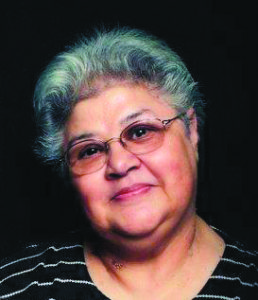Lipizzaners Operation Cowboy: Part Two

In last month’s NWC, I wrote about how the Lipizzan horses of the Spanish Riding School were rescued from the Nazi captors by U.S. General George Patton’s Third Army’s 2nd Cavalry unit. This month’s article will cover a broader aspect of the history of the Lipizzan horses, particularly with regard to how they were impacted by the various wars in Europe during the past 500 years.
In 1572 the first Spanish Riding Hall was built, during the Austrian Empire, and is the oldest of its kind in the world. The Spanish Riding School, though located in Vienna, Austria, takes its name from the original Spanish heritage of its horses. In 1729 Charles VI commissioned the building of the Winter Riding School in Vienna and in 1735; the building was completed that remains the home of the Spanish Riding School today. The highly trained Lipizzan stallions’ public performances demonstrate classical dressage movements and training.
The Lipizzans endured several wartime relocations throughout their history, each of which saved the breed from extinction. The first was in March 1797 during the War of the First Coalition, when the horses were evacuated from Lipica. During the journey, 16 mares gave birth to foals. In November 1797, the horses returned to Lipica, but the stables were in ruins. They were rebuilt, but in 1805, the horses were evacuated again when Napoleon invaded Austria. They did not return until April 1, 1807. Following the Treaty of Schönbrunn in 1809, the horses were evacuated three more times during the unsettled period that followed, resulting in the loss of many horses and the destruction of the written studbooks that documented bloodlines of horses prior to 1700. The horses finally returned to Lipica for good in 1815, where they remained for the rest of the 19th century.
The first evacuation of the 20th century occurred in 1915 when the horses were evacuated from Lipica due to World War I and placed at Laxenburg and Kladrub. Following the war, the Austro-Hungarian Empire was broken up, with Lipica becoming part of Italy. Thus, the animals were divided between several different studs in the new postwar nations of Austria, Italy, Hungary, Czechoslovakia, Romania and Yugoslavia. The nation of Austria kept the stallions of the Spanish Riding School and some breeding stock. By 1920, the Austrian breeding stock was consolidated at Piber.
During World War II, the high command of Nazi Germany transferred most of Europe’s Lipizzan breeding stock to Hostau, Czechoslovakia. The breeding stock was taken from Piber in 1942, and additional mares and foals from other European nations arrived in 1943. The stallions of the Spanish Riding School were evacuated to St. Martins, Austria from Vienna in January 1945, when bombing raids neared the city and the head of the Spanish Riding School, Colonel Alois Podhajsky, feared the horses were in danger. By spring of 1945, the horses at Hostau were threatened by the advancing Soviet army, which might have slaughtered the animals for horse meat had it captured the facility.
The rescue of the Lipizzans by the United States Army, dramatized by the Disney movie Miracle of the White Stallions, occurred in two parts: The United States Third Army under the command of General George S. Patton, was near St. Martins in the spring of 1945 and learned that the Lipizzan stallions were in the area On May 7, 1945, Podhajsky put on an exhibition of the Spanish Riding School stallions for Patton and Undersecretary of War Robert P. Patterson, and at its conclusion requested that Patton take the horses under his protection.
Meanwhile, the Third Army’s United States Second Cavalry, a tank unit under the command of Colonel Charles Reed, had discovered the horses at Hostau, where there were also 400 Allied prisoners of war, and had occupied it on April 28, 1945. “Operation Cowboy”, as the rescue was known, resulted in the recovery of 1,200 horses, including 375 Lipizzans. Patton learned of the raid, and arranged for Podhajsky to fly to Hostau. On May 12, American soldiers began riding, trucking and herding the horses 35 miles across the border into Kotztinz, Germany. The Lipizzans were eventually settled in temporary quarters in Wimsbach, until the breeding stock returned to Piber in 1952, and the stallions returned to the Spanish Riding School in 1955. In 2005, the Spanish Riding School celebrated the 60th anniversary of Patton’s rescue by touring the United States.

Alois Podhajsky will be remembered most for saving the Lipizzans, preserving their history following the war, as well as for his dedication to the advancement of Classical dressage, and his contributions to the Spanish Riding School.
Following his retirement, Podhajsky continued to teach classical horsemanship, and went on to author many books about the Lipizzans, and about the Equestrian Arts. Among them: The Spanish Riding School (1948), The White Stallions of Vienna (1963), My Dancing White Horses (1965), The Complete Training of Horse and Ride (1967), The Art of Dressage (1976), My Horses, My Teachers (1997). Most of these are still in print and are available at various book stores. Podhajsky died following a stroke in 1973, in Vienna, Austria
“We must live for the school. Offer our lives to it. Then, perhaps, little by little, the light will grow from the tiny candle we keep lit here, and the great art—of the haute école—will not be snuffed out.” -Alois Podhajsky
Sources: history.com, Wikipedia.com, Amazon.com
No Comments
Leave a comment Cancel